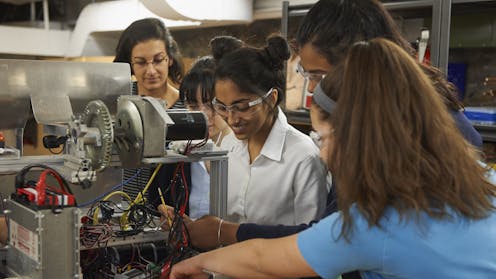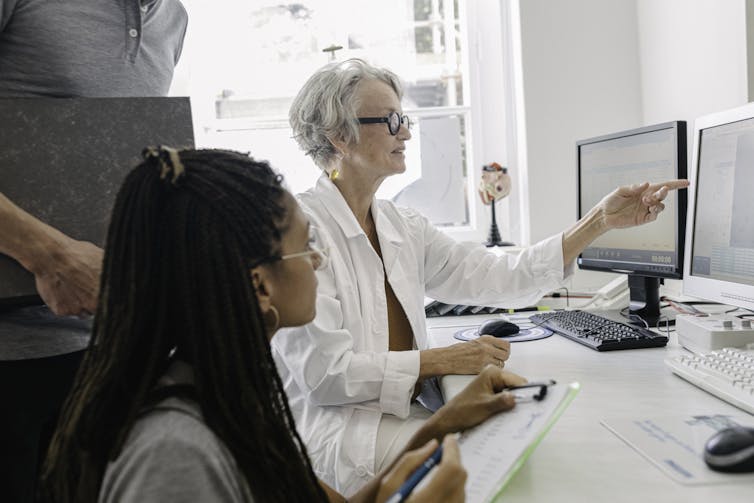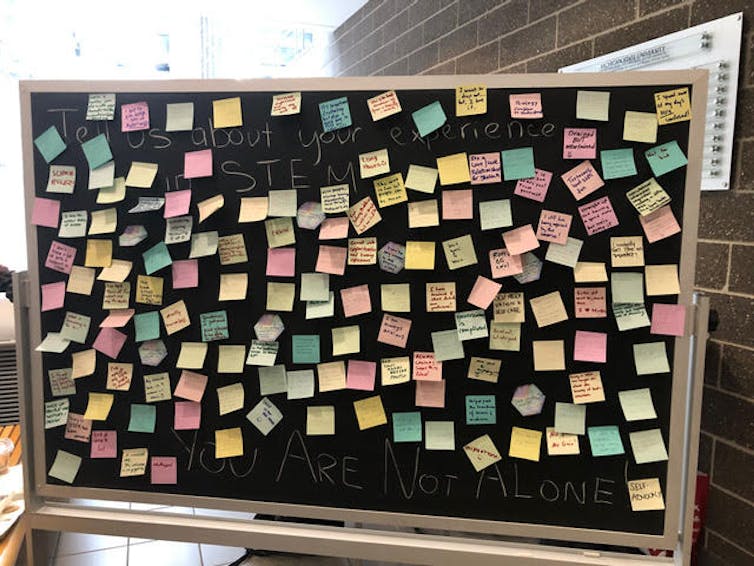Women in STEM face challenges and underrepresentation – this course gives them tools to succeed
- Women in STEM fields face numerous challenges, including bias, stereotypes, and workplace cultures that hinder their success, leading to underrepresentation and high turnover rates.
- The “Tools for Women in STEM” course aims to empower women with tools and strategies to overcome these obstacles, including self-awareness, networking, negotiations, and leadership skills.
- Through a combination of in-class activities, practice exercises, and real-life applications, students develop essential skills such as effective communication, conflict resolution, and mentorship, leading to increased confidence and career advancement.
- The course also focuses on creating a welcoming culture and promoting work-life balance, recognizing that these factors are crucial for women’s success in STEM careers and overall well-being.
- By providing students with the skills and support needed to thrive in STEM fields, courses like “Tools for Women in STEM” can help address the broader issue of underrepresentation and promote a more inclusive and equitable scientific community.

As a graduate student in physics, I was often the only woman in the room. As I gained more experience, I learned valuable lessons about the scientific community and how to better advance my career. Once I started mentoring female graduate students, I realized that many of them had also felt alienated around some scientists, an experience that chipped away at their confidence or the passion for their work.
Over two decades of doing research and mentoring students, I have compiled some tools that give women the power to improve their own experiences in the STEM world. In 2019, I turned these resources into an experiential course called Tools for Women in STEM. Although the course is designed for women, all genders are welcome.
There are many reasons women are underrepresented in STEM, including bias and stereotypes, but also workplace cultures and the absence of policies for work-life balance. A report from the American Association for University Women makes recommendations for improving the retention of women in STEM careers: ensuring women are getting the mentoring they need, supporting a work-life balance and creating a welcoming culture.
This is all easier said than done. Despite the many programs and initiatives implemented across the country since 2010, when the AAUW report came out, the percentage of women in many fields of science, technology, engineering and math continues to stay very low, with a trend that is flat at best. Even if they come into the field, many choose to leave.
What does the course explore?
To help young women navigate their professional lives in STEM, I start by taking each student on a personal journey, beginning by contextualizing their experiences in STEM. Students reflect on the shame triggers that can make them feel like they’re not good enough even when their record is stellar, as well as any biases they may have about others. Self-awareness is an essential starting point.
Students then work on skills with real-life impact, ranging from networking at meetings and building effective relationships with mentors to negotiations, dealing with harassment and exploring leadership roles. This is done through in-class activities and often followed up with practice in their real life.

Willie B. Thomas/DigitalVision via Getty Images
What does the course prepare students to do?
Prepped by videos and papers, students practice these skills and discuss strategies in small groups. This model provides an opportunity for collaboration and for assimilating and sharpening all the skills covered in the course.
Take mentoring as an example. Students practice reaching out to potential mentors and establishing a new mentoring relationship. Through discussion, students learn to both receive and provide useful feedback. When students have a safe, trusting environment, they’re more inclined to try out new things.
During the last month of the course, students practice communicating effectively in a wide range of circumstances characteristic of a STEM career. They focus on one type of communication each week: scientific presentations, posters, research group meetings and outreach, all important skills in a STEM job that aren’t always formally taught.
We wrap up the course with a “Women in STEM” outreach event that is fully created and implemented by the students themselves. This event has ranged from organizing a STEM research fair, speaking to undergrads about bridges between STEM and real life, and collecting sticky notes from researchers about their experiences in STEM.

Filomena Nunes
As students work together in a safe, trusting environment, they develop their own voices and gain confidence. And the connections established during the course can continue throughout their graduate program.
Why is this course relevant now?
Today, women in STEM have higher expectations for their workplace than those of previous generations, and they are less tolerant of toxic environments. Courses like this can empower students to advocate for a better experience and promote a healthy culture for women in STEM.
Women aren’t the only group underrepresented in STEM. Instruction that tailors these lessons to the challenges faced by other identity groups could help many other students succeed.
Uncommon Courses is an occasional series from The Conversation U.S. highlighting unconventional approaches to teaching.
![]()
Filomena Nunes receives funding from NSF and DOE.
